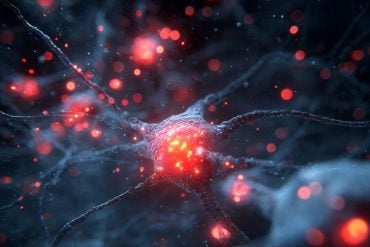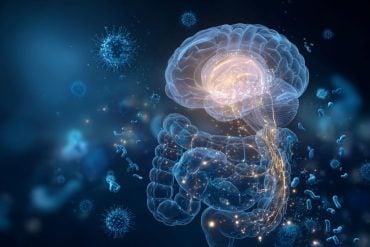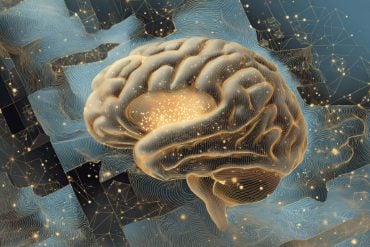Summary: A new study has revealed a link between sunlight exposure, physical activity, and depression using wrist-based activity sensors. Over two weeks, researchers found that individuals with depression had lower physical activity levels, especially in shorter daylight periods, compared to those without depression.
The study suggests that people with depression may experience altered responses to sunlight, potentially limiting their ability to benefit from sunlight’s mood-boosting effects. The findings could pave the way for digital tools that use sunlight exposure data to predict mood patterns and personalize mental health interventions.
Key Facts:
- Lower physical activity was observed in depressed individuals, especially during shorter daylight periods.
- Sunlight exposure influenced physical activity levels more in non-depressed participants.
- The study could help develop digital tools to predict mood shifts using sunlight and activity data.
Source: PLOS
Wrist-based activity sensors worn by individuals with depression and those without over the course of two weeks provided evidence for the relationship between daily sunlight exposure and physical activity, according to a study published September 25, 2024, in the open-access journal PLOS Mental Health by Oleg Kovtun and Sandra Rosenthal from Vanderbilt University, U.S.
Mood disorders are the leading cause of ‘disability’ worldwide. Up to 30 percent of individuals with major depressive disorder and bipolar disorder display a seasonal pattern of symptoms.

This phenomenon is now recognized in official diagnostic manuals. Yet very little is known about the influence of day length (i.e., photoperiod) and sunlight intensity (i.e., solar insolation) on seasonal patterns in major depressive disorder and bipolar disorder.
In their new study, Kovtun and Rosenthal used a quantitative approach to examine the relationship between sunlight measures and objectively measured movement activity patterns to begin to understand the environmental factors driving seasonality in major depressive disorder and bipolar disorder.
They used motor-activity recordings collected via accelerometers (which measure the rate of change of the velocity of an object with respect to time) from 23 individuals with unipolar or bipolar depression and 32 individuals without depression. Participants were recruited at the University of Bergen, Norway.
The findings revealed relationships between daytime physical activity, depressed state, photoperiod and solar insolation. In particular, more depressed states were associated with lower daytime activity, whilst daytime activity increased with photoperiod and solar insolation.
Additional results suggest that the impact of solar insolation on physical activity may differ between depressed individuals and those who are not. This finding could indicate that depressed individuals exhibit an altered physiological link between energy input (i.e., solar insolation) and physical activity.
On the other hand, it is also possible that increased sedentary behavior results in reduced time spent outdoors and does not allow depressed people to capitalize on the benefits of sunlight exposure.
According to the authors, the study presents a generalizable strategy to understand the complex interplay between sunlight, physical activity, and depressed state using open-source digital tools.
The ability to identify mood disturbances, particularly in seasonally susceptible individuals, using passive digital biomarker data offers promise in informing next-generation predictive, personalized diagnostics in mental health.
Specifically, a digital biomarker, such as accelerometer-derived motor activity patterns, could form the basis of an early warning system that alerts a clinician to initiate a timely intervention.
Incorporating objectively measured sunlight exposure markers (i.e., NASA-collected solar insolation data or accelerometer-measured light exposure) could further enhance the predictive power of such tools and lay the foundation for personalized models aimed at individuals susceptible to mood disturbances with seasonal patterns.
Rosenthal and Kovtun add, “Individuals with seasonal mood disorders may not yet recognize the pattern of their illness. One of the goals of our study is to motivate the development of digital tools to assist clinicians and help affected individuals with self management of their symptoms”.
Funding: This work was supported by Velux Stiftung (grant No. 1821 to SJR and OK). The funders had no role in study design, data collection and analysis, decision to publish, or preparation of the manuscript.
About this depression and mental health research news
Author: Charlotte Bhaskar
Source: PLOS
Contact: Charlotte Bhaskar – PLOS
Image: The image is credited to Neuroscience News
Original Research: Open access.
“Seasonality in mood disorders: Probing association of accelerometer-derived physical activity with daylength and solar insolation” by Oleg Kovtun et al. PLOS Mental Health
Abstract
Seasonality in mood disorders: Probing association of accelerometer-derived physical activity with daylength and solar insolation
Mood disorders are the leading cause of disability worldwide. Up to 30 percent of individuals with major depressive disorder (MDD) and bipolar disorder (BD) display a seasonal pattern of onset, a phenomenon now recognized in the official diagnostic manuals (DSM-5 and ICD-11).
Very little is known about the influence of day length (photoperiod) and sunlight intensity (solar insolation) on seasonal patterns in MDD and BD.
Here we report a quantitative approach to examine the relationship between sunlight measures and objectively measured motor activity patterns to understand environmental factors driving seasonality in MDD and BD.
Our generalized linear model (GLM) assessment of the Depresjon dataset, which includes short-term (up to two weeks) motor activity recordings of 23 unipolar and bipolar depressed patients and 32 healthy controls recruited to the study at the University of Bergen Norway (60.4° N latitude, 5.3° E longitude), revealed significant association of accelerometer-derived daytime physical activity with participant’s depressed state (p<0.001), photoperiod (p<0.001), and solar insolation (p<0.001).
Our study presents a generalizable strategy to decipher the complex interplay between sunlight, physical activity, and depressed state using open-source digital tools.
The ability to identify mood disturbances, particularly in seasonally susceptible individuals, using passive digital biomarker data offers great promise in informing next-generation predictive, personalized diagnostics in mental health.







